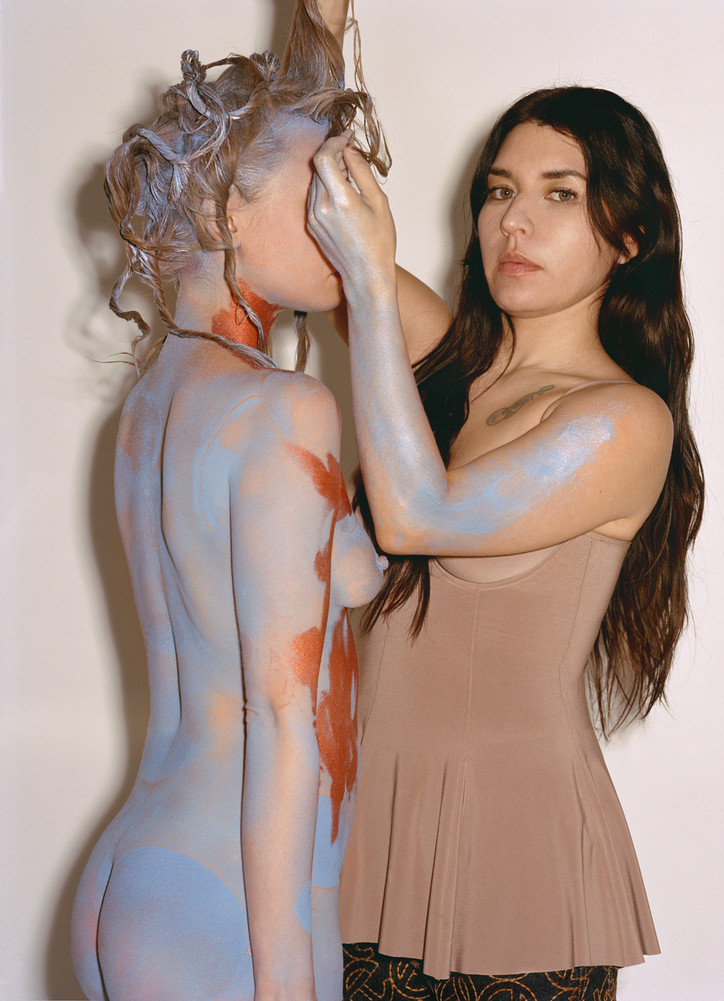ES — How does ritual play a role in your practice? Your performance-based work at Art Basel Unlimited last year, for me, conflated dance, ceremony, and body art into a deeply moving action bordering on the religious. I’d love to know more about the background of that piece.
DH — BLISS (REALITY CHECK), 2017 was a breakthrough moment for me, because of its duration—eight hours a day, seven days straight. It was a huge risk, as the models were the primary focus and, as always, I had given them very little instruction besides, “Stand still, and when you move, please move slowly.” I never like to tell the models what to do as it is their own experience. I believe the element of chaos and improvisation is what makes the performances authentic. We had already been working together for years so there was an inherent trust and understanding between the models and myself. The work in itself is visually dramatic so I want the models’ actions to be as non-dramatic as possible.
The space the audience encountered consisted of very few elements: a scent, a white sand-covered stage, a soundtrack (that was mostly bass sounds to give them a vibrational pulse that also moves the sand, that keeps time, and keeps time for them), two life-size sculptures that had hidden speakers—I did not know what they represented at the time, but later I realized the one represented my father (male/fragility) and one was representing my mother (bountiful giving) and finally the two painted models.
We created our own ecosystem within those walls, which included backstage where the models would be painted, take breaks, eat their meals, and go to the bathroom. The models and I would wake up at 6 am, and I would paint them for three hours to prepare them for an eight-hour shift. During the day I would be backstage cleaning up and preparing their meals. I would often watch the performance in the crowd amongst the general public. I did not realize how intense the performance happening within the crowd would be. So this also added to my learning experience. The body paintings were improvised, so progressively got crazier as the week went on given that I had to create fourteen new paintings in seven days. Afterwards we would have dinner together and talk about the day, sleep, and do it all over again. We learned so much about ourselves, and it was very emotional for everyone involved, not to mention the audience.
